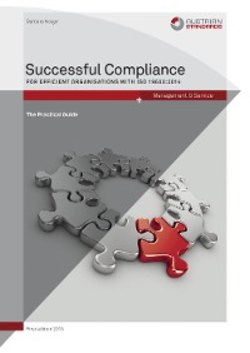Читать книгу Successful Compliance - Barbara Neiger - Страница 23
1.5STANDARDISATION OF MANAGEMENT SYSTEMS IN ACCORDANCE WITH ISO
ОглавлениеIn the field of standardisation, the concept of a ‘management system’ can be traced back to 1959, when the US Department of Defence released the MIL-Q-9858 quality standard.[52] This provision was included in the NATO AQAP series of standards in 1969 and in 1979 subsequently served as the basis for the BS 5750 series of quality assurance standards of the British Standards Institution (BSI). Based on the BS 5750 series of standards, the first ISO 9000 standard for the basics of and concepts relating to quality management systems was published in 1987 by the International Organisation for Standardization (ISO).[53]
The International Organisation for Standardization, based in Geneva, Switzerland, is probably the world’s most well-known and largest provider of voluntary international standards.[54] Founded in London in 1947 by engineers from twenty-five countries, ISO is an independent, non-governmental organisation formed by national standards organisations from 166 member countries from around the world. With 19,500 published international standards, virtually all sectors are covered. The objective is to facilitate international coordination through the harmonisation of industry standards. The type of development, in the form of committees filled with international professionals acting in consensus, ensures that specifications for products, services and systems conform to the latest state-of-the-art in order to ensure quality, safety and efficiency.
In order to meet this requirement for harmonisation, a template for the development of ISO standards for management systems was put into effect in 2012. This document is intended to avoid different requirements in standards for differing management systems and to enable the implementation of a so-called ‘integrated’ management system. In an integrated management system, requirements of two or more standards associated with management systems are implemented together (e.g. for ISO 9001 Quality Management with ISO 14001 Environmental Management). This avoids the costly, time-consuming and thus inefficient operation of multiple systems in parallel.
